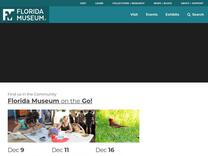Did the Calusa Have A “Great Fishery of Mullet”? – Randell Research Center https://www.floridamuseum.ufl.edu/rrc/blog/did-the-calusa-have-a-great-fishery-of-mullet/
A hallmark of complex human societies is the existence of surplus foods. Surplus foods enable people, past and present, to spend time on things other than producing food. Mullet, especially the striped mullet (Mugil cephalus), because of their predictable, mass-schooling behavior and preser
Randell Research Center Did the Calusa Have A “Great Fishery of Mullet”?

